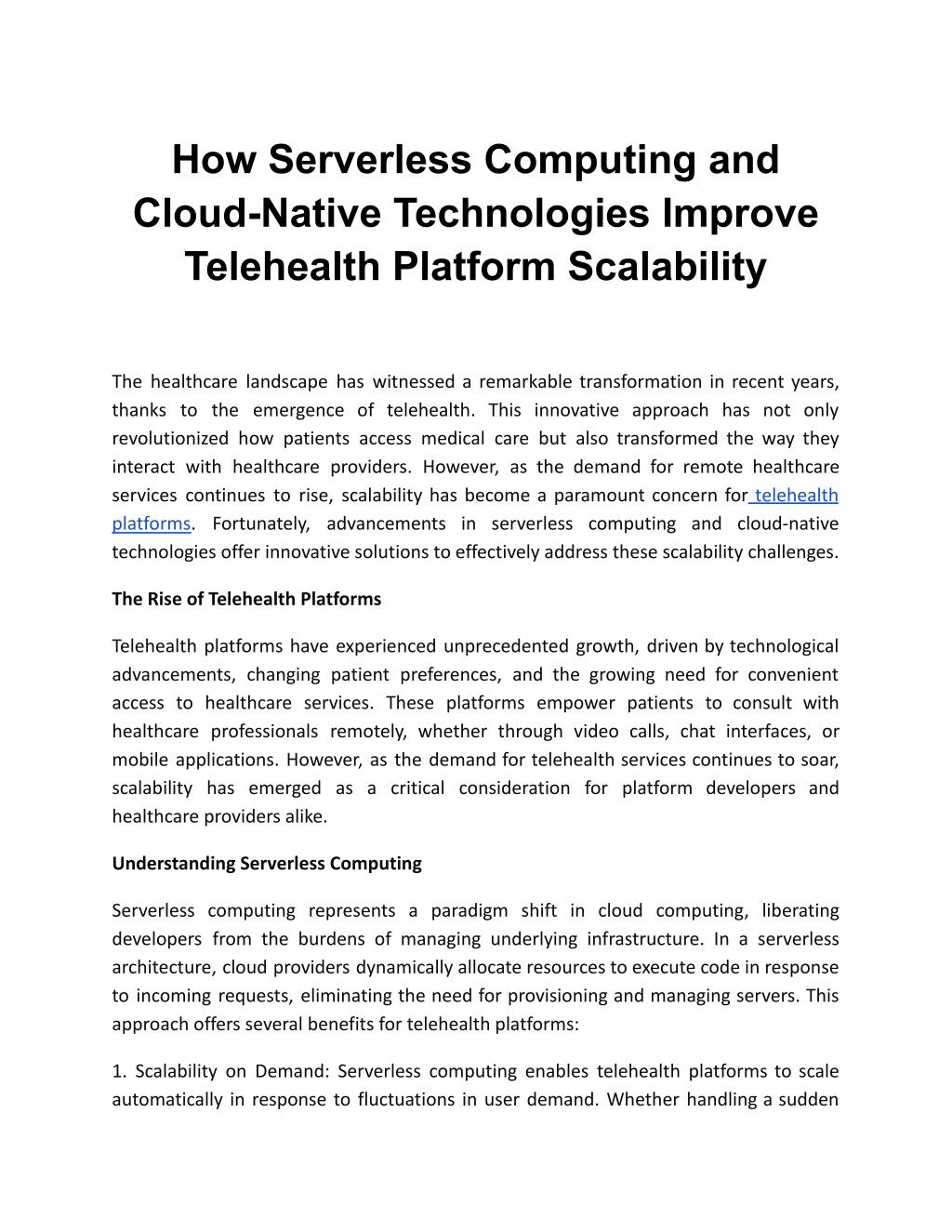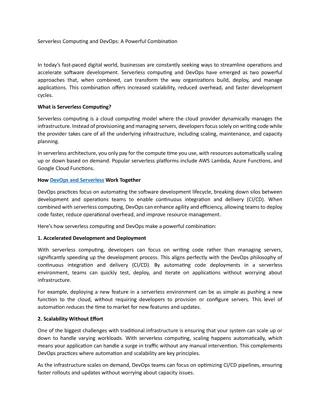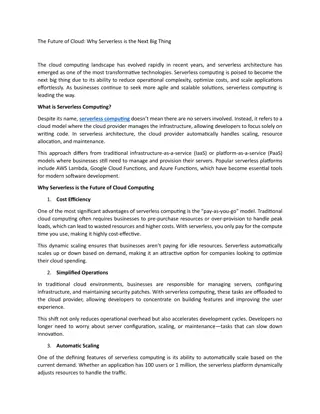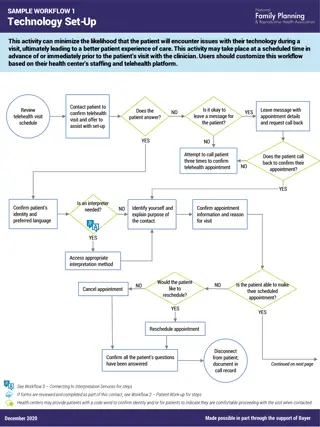
How Serverless Computing and Cloud-Native Technologies Improve Telehealth Platform Scalability
As telehealth continues to gain momentum as a preferred mode of healthcare delivery, the scalability of telehealth platforms becomes increasingly crucial. Serverless computing and cloud-native technologies offer compelling solutions to address the scalability challenges faced by telehealth platforms, enabling them to deliver reliable, efficient, and scalable services to patients and healthcare providers worldwide.
Download Presentation

Please find below an Image/Link to download the presentation.
The content on the website is provided AS IS for your information and personal use only. It may not be sold, licensed, or shared on other websites without obtaining consent from the author. If you encounter any issues during the download, it is possible that the publisher has removed the file from their server.
You are allowed to download the files provided on this website for personal or commercial use, subject to the condition that they are used lawfully. All files are the property of their respective owners.
The content on the website is provided AS IS for your information and personal use only. It may not be sold, licensed, or shared on other websites without obtaining consent from the author.
E N D
Presentation Transcript
How Serverless Computing and Cloud-Native Technologies Improve Telehealth Platform Scalability The healthcare landscape has witnessed a remarkable transformation in recent years, thanks to the emergence of telehealth. This innovative approach has not only revolutionized how patients access medical care but also transformed the way they interact with healthcare providers. However, as the demand for remote healthcare services continues to rise, scalability has become a paramount concern for telehealth platforms. Fortunately, advancements in serverless computing and cloud-native technologies offer innovative solutions to effectively address these scalability challenges. The Rise of Telehealth Platforms Telehealth platforms have experienced unprecedented growth, driven by technological advancements, changing patient preferences, and the growing need for convenient access to healthcare services. These platforms empower patients to consult with healthcare professionals remotely, whether through video calls, chat interfaces, or mobile applications. However, as the demand for telehealth services continues to soar, scalability has emerged as a critical consideration for platform developers and healthcare providers alike. Understanding Serverless Computing Serverless computing represents a paradigm shift in cloud computing, liberating developers from the burdens of managing underlying infrastructure. In a serverless architecture, cloud providers dynamically allocate resources to execute code in response to incoming requests, eliminating the need for provisioning and managing servers. This approach offers several benefits for telehealth platforms: 1. Scalability on Demand: Serverless computing enables telehealth platforms to scale automatically in response to fluctuations in user demand. Whether handling a sudden
surge in patient consultations or managing periods of low activity, serverless architectures can efficiently allocate resources to match workload requirements. 2. Cost Efficiency: With serverless computing, telehealth platforms only pay for the computing resources consumed during code execution, eliminating the need for idle infrastructure. This pay-as-you-go model can result in significant cost savings, particularly for platforms with unpredictable usage patterns. 3. Improved Developer Productivity: By abstracting away infrastructure management tasks, serverless computing allows developers to focus on writing code and delivering features that enhance the telehealth experience. This increased productivity can accelerate the development and deployment of new features, helping telehealth platforms stay competitive in a rapidly evolving landscape. Harnessing Cloud-Native Technologies Cloud-native comprehensive framework for building and deploying applications in the cloud. These technologies are tailored to leverage the scalability, resilience, and agility of cloud environments, empowering telehealth platforms to deliver reliable and efficient services to users. Key components of cloud-native architectures include: technologies complement serverless computing by providing a 1. Containerization: Containerization technologies such as Docker empower developers to package applications and their dependencies into lightweight, portable containers. By encapsulating each component of the telehealth services in a container, developers can ensure consistency and reproducibility across different environments, facilitating seamless deployment and scalability. 2. Orchestration: Container orchestration platforms like Kubernetes provide robust tools for automating the deployment, scaling, and management of containerized applications. By orchestrating containerized workloads across clusters of virtual or physical machines, Kubernetes ensures optimal resource utilization and high availability for telehealth platforms, even during periods of peak demand. 3. Microservices Architecture: Embracing a microservices architecture enables telehealth platforms to break down complex systems into smaller, loosely coupled services that can
be developed, deployed, and scaled independently. This modular approach enhances flexibility, resilience, and scalability, allowing telehealth platforms to evolve rapidly in response to changing requirements and user feedback. Conclusion As telehealth continues to gain momentum as a preferred mode of healthcare delivery, the scalability of telehealth platforms becomes increasingly crucial. Serverless computing and cloud-native technologies offer compelling solutions to address the scalability challenges faced by telehealth platforms, enabling them to deliver reliable, efficient, and scalable services to patients and healthcare providers worldwide. By embracing these innovative technologies, telehealth platforms can unlock new opportunities for growth, innovation, and impact in the evolving landscape of healthcare delivery.






















